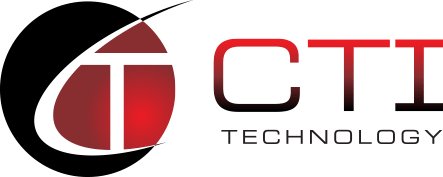How Can Your Small Business Use AI to Outmarket Your Competitors? Proven Strategies
Small businesses face tough competition from bigger companies with deep pockets. But artificial intelligence is changing the game by offering affordable tools that help you compete more effectively.
AI lets small businesses automate marketing, personalize customer experiences, and tap into insights that used to be out of reach for all but the largest companies.
Now, you can use AI-powered marketing tools to analyze customer behavior, optimize ads, and create targeted content without breaking the bank. These technologies help you understand your market, reach the right people with personalized messages, and react faster to competitors.
The trick is determining which AI tools fit your business goals and using them wisely. Focus on areas where AI makes the biggest difference, and you’ll get more out of your marketing while saving time and money.
Key Takeaways
- AI tools let small businesses automate marketing and access insights that used to be reserved for big companies.
- Using AI for customer targeting, content creation, and ad optimization can give you a real edge.
- Pick AI solutions that actually fit your business goals and marketing needs.
Leveraging AI for Competitive Marketing Advantage
AI marketing tools analyze what your competitors are doing in real-time and spot market gaps you can use to your advantage. You’ll get the best results by matching specific AI features to your business goals and your customers’ needs.
Understanding AI-Powered Marketing Tools
- Customer Analytics Platforms crunch behavioral data to predict what customers will buy and when. They track website clicks, email opens, and social media activity to build detailed profiles.
- Content Generation Systems create personalized marketing copy, social posts, and emails at scale. These tools learn your brand’s voice and customer preferences to keep your messaging consistent.
- Predictive Analytics Software forecasts trends and customer lifetime value by analyzing past data. You can spot which prospects will most likely convert and spend your marketing budget more wisely.
- Chatbots and Automation Tools answer customer questions around the clock, collect leads, and book appointments. They connect with your CRM to keep track of conversations and personalize future interactions.
- Social Media Management AI monitors your brand mentions, checks sentiment, and suggests the best posting times. These platforms also track your competitors’ actions and find trending topics in your industry.
Identifying Competitor Weaknesses with AI
- Social Listening Tools monitor mentions of your competitors and pick up on customer complaints. You can spot service gaps and reach out to unhappy customers who might be ready to switch.
- Website Analysis Software checks competitor sites for issues like slow load times or bad mobile design. Spotting these problems helps you see where you can do better and win over their customers.
- Pricing Intelligence Platforms track your competitors’ pricing in real-time and alert you to market shifts. They look at pricing strategies across customer types and regions so you can react fast.
- SEO Analysis Tools reveal which keywords your competitors rank for—and which ones they’re missing. You can then target those gaps with your own content.
- Ad Intelligence Systems monitor what your competitors spend on ads, their creative strategies, and how their campaigns perform. You’ll see what messages work with your shared audience and which ones flop.
- Aligning AI Applications with Business Goals
- Revenue Growth Objectives call for AI tools that score leads, optimize conversions, and analyze customer value. Use predictive analytics to find high-value prospects and personalization tools to boost conversions.
- Market Share Expansion means using competitive intelligence and social listening to find competitor weaknesses. Sentiment analysis helps you understand why customers are unhappy with current options.
- Customer Retention Goals benefit from churn prediction and automated engagement campaigns. AI-powered customer service tools help resolve problems quickly and keep customers happy.
- Brand Awareness Campaigns make use of AI content creation and social media optimization. Trend analysis points you to viral content opportunities and the best times to post.
- Operational Efficiency improves when you automate marketing workflows and use performance dashboards. Choose AI tools that cut out manual work and deliver actionable insights.

Enhancing Customer Targeting and Personalization
AI is changing how small businesses find and connect with ideal customers. Automated audience analysis and behavioral prediction allow you to target with precision—using data-driven segmentation, personalized emails, and smart product recommendations.
AI-Driven Audience Segmentation
AI sorts through customer data to create detailed audience segments based on buying habits, demographics, and engagement. Automated segmentation uncovers high-value customers and new opportunities you might overlook otherwise.
Machine learning models group people by transaction history, website activity, and social media engagement. You can spot frequent buyers, bargain hunters, or seasonal shoppers easily.
Key segmentation criteria include:
- How often and when do people buy
- Product preferences
- Location and demographics
- Preferred communication channels
- Potential customer value
Dynamic segmentation updates profiles in real-time as new data rolls in. Your marketing stays relevant as customer preferences shift.
Personalized Email Marketing Campaigns
AI customizes email content, subject lines, and send times based on what each customer likes and does. Machine learning figures out the best schedules and content for every recipient.
To suggest products and offers, personalization engines look at open rates, clicks, and past purchases. You can automate welcome emails, cart reminders, and follow-ups after a sale.
Personalization elements include:
- Product suggestions from browsing history
- Personalized subject lines
- Best send times for each person
- Dynamic content that changes by segment
AI-powered A/B testing keeps improving your emails by automatically testing different versions and picking the winners.
Predictive Product Recommendations
Predictive analytics spot patterns in purchases and browsing to suggest products at just the right time. These systems boost average order value and make customers happier with more relevant suggestions.
Recommendation engines use collaborative filtering and content-based methods to determine what people will likely buy next. You can use these suggestions on your website, in emails, and in your app.
Recommendation types include:
- Frequently bought together
- Customers who bought this also bought
- Trending products in their category
- Seasonal picks
Real-time systems adjust recommendations based on what’s in a customer’s cart or what they’re looking at right now. This helps capture intent and reduce abandoned carts.
Boosting Content Creation and Social Media Performance
AI is reshaping how small businesses create content and handle social media. It automates post creation, optimizes timing and messaging, and delivers deep performance insights to keep your content high-quality and consistent.
Automated Content Generation
AI writing tools whip up blog posts, social captions, and marketing copy in minutes. Tools like Jasper, Copy.ai, and ChatGPT help you quickly brainstorm, write product descriptions, and build email campaigns.
Feed in your brand voice and audience details, and the AI learns your style over time. You get content that sounds like you, not a robot.
Key automated content types include:
- Social posts and captions
- Blog outlines and drafts
- Email subject lines and body text
- E-commerce product descriptions
- Ad copy
AI also helps beat writer’s block by suggesting headlines, creating variations, and repurposing content for different platforms. You can knock out weeks of content in one sitting.
Optimizing Social Media Posts with AI
AI checks your audience’s habits to find the best posting times, hashtag combos, and content formats. Platforms like Hootsuite Insights and Sprout Social use machine learning to predict which posts will do best.
You can A/B test captions, images, and posting times automatically. The AI watches engagement patterns and tweaks your strategy as needed.
AI optimization features:
- Best time to post
- Hashtag analysis
- Content format suggestions
- Sentiment tracking
- Competitor benchmarking
These tools also let you personalize posts for different groups. Create versions of the same post for specific demographics or interests.
Analyzing Engagement Data for Improvement
AI analytics tools sift through social data to spot trends and opportunities. Track engagement, reach, and conversions across all your platforms at once.
The tech shows which content types your audience loves most and flags new trends before your competitors catch on.
Critical metrics AI tracks:
- Engagement by content type
- Audience growth
- Peak activity times
- Comment sentiment
- Competitor comparisons
You’ll get actionable recommendations straight from the data. The AI suggests topics, posting frequency, and tweaks to your audience targeting so you can keep improving.
Optimizing Online Advertising with AI
AI is shaking up digital advertising by automating targeting, personalizing ad content, and analyzing real-time campaigns. Small businesses can stretch their ad budgets further and boost conversions, even when competing with bigger brands.
AI-Powered Ad Targeting
AI digs into customer data to find your ideal audience segments. To build detailed profiles, machine learning reviews demographics, browsing, purchase history, and social activity.
Lookalike audiences are especially powerful. Upload your customer data, and the AI finds new prospects who act just like them.
Predictive analytics helps you reach people when they’re most likely to buy. The AI looks for signals like:
- Recent searches
- Time spent on certain pages
- Email engagement
- Social interactions
Dynamic audience adjustment means campaigns can automatically shift targeting based on what’s working. If some groups convert better, the AI moves more budget their way.
Dynamic Ad Copy and Creative Selection
AI creates and tests multiple ad versions to see what works best. Natural language processing writes headlines, descriptions, and CTAs tailored to each group.
Automated A/B testing runs in the background. The AI keeps creating and testing new ads, promoting the winners and pausing the losers.
Personalization engines tweak ad content based on user data. Someone who browses a specific product will see ads for that item, while new visitors get broader messaging.
Creative optimization isn’t just about the words—AI also picks images and videos that resonate with different groups, automatically serving up the most effective combos.
Real-Time Campaign Performance Analysis
AI monitors campaign metrics every few minutes, not just once a day. Machine learning spots trends and issues that people might miss.
Automated bid adjustments kick in fast. If your ads do better on mobile in the evening, the AI automatically raises mobile bids during those times.
Performance prediction models forecast how your campaigns will do based on current trends. You’ll get alerts if you’re about to go over budget or miss your goals, so you can adjust quickly.
Cross-platform optimization means the AI looks at performance across Google, Facebook, Instagram, and more. It shifts your budget to the best-performing channels and tweaks your message for each platform.
Using AI for Market and Competitor Intelligence
AI is changing how small businesses gather and use competitive intelligence. It automates data collection from multiple channels and delivers real-time insights into market trends, so you can spot opportunities and track competitors faster than ever.
AI Tools for Industry Trend Analysis
AI-powered analytics platforms simultaneously scan thousands of data sources to spot new industry patterns. Tools like Google Trends API, Brandwatch, and Sprout Social pull in social media chatter, news, and search data to highlight changing consumer preferences.
Predictive analytics help you get ahead of market changes before your competitors catch on. These systems look at past data to forecast demand swings, seasonal trends, and what customers might want next.
Social listening tools watch brand mentions, hashtag performance, and shifts in sentiment across platforms. You can follow industry keywords to catch viral topics or see where interest is fading, which affects your market position.
Key trend analysis features include:
- Real-time sentiment tracking
- Keyword volume forecasting
- Consumer behavior pattern recognition
- Market saturation analysis
Search trend analysis shows what people are actually looking for online. This data lets you tweak your products and content to match real demand, not just guesses.
Monitoring Competitor Marketing Strategies
AI monitoring tools monitor competitor activity across digital channels 24/7, so you don’t have to. Platforms like SEMrush, Ahrefs, and SimilarWeb automatically analyze competitor websites, ad campaigns, and content performance.
Social media monitoring uncovers competitor posting schedules, engagement rates, and campaign themes. You can see which content types get the most traction and borrow what works for your own brand.
Price tracking algorithms watch competitor pricing changes in real time. These tools let you know when someone tweaks their rates, launches a promo, or rolls out new pricing tiers that might shake up your market.
Advertisement intelligence reveals competitor ad spend, targeting choices, and creative variations. You can determine which platforms they focus on and spot any gaps in their campaigns.
Email marketing analysis tools track how often your competitors send newsletters, their subject lines, and their promo tactics. This info can help you sharpen your own email strategy and find opportunities they’re missing.
Automated Insights for Strategic Decision-Making
Machine learning algorithms crunch competitive data and serve up actionable recommendations fast. These systems spot market opportunities, threats, and gaps that need your attention immediately.
Dashboard automation pulls together multiple data streams into one report. You’ll get daily or weekly summaries that highlight competitor moves, market shifts, and performance benchmarks.
Predictive modelling determines how your competitors might react to your next move. This helps you plan product launches, pricing changes, and marketing pushes with a stronger edge.
When competitors launch new products, change prices, or shift their marketing focus, automated alert systems ping you. Getting this info in real time means you can respond quickly and keep your position strong.
Risk assessment algorithms dig into competitor strengths and weaknesses to show you where you can gain ground. These tools look at financial performance, customer satisfaction, and operational efficiency.
Improving Customer Experience with AI Solutions
AI is changing how businesses interact with customers through automated support, personalized experiences, and smarter service improvements. These solutions let small businesses deliver tailored service at scale and save on costs.
AI-Driven Chatbots and Virtual Assistants
AI chatbots handle routine customer questions around the clock without needing a human. You can set them up on your website, social channels, and messaging apps to give instant replies.
Modern chatbots understand natural language and context. They can solve common issues like tracking orders, providing product info, or basic troubleshooting—no need to pull in a person for every little thing.
Key chatbot capabilities include:
- Order status updates
- Product recommendations
- Appointment scheduling
- FAQ responses
- Lead qualification
You can hook chatbots into your CRM to pull up customer history. That lets them give more personalized answers based on past purchases and interactions.
Virtual assistants take things further, handling complex conversations. They process payments, update orders, and walk customers through multi-step processes.
Personalized Customer Journeys
AI looks at customer behavior to build personalized experiences. Your system tracks site visits, purchase history, and engagement to predict what a customer might want next.
Dynamic content personalization tweaks your website for each visitor. Product recommendations, special offers, and content suggestions all change automatically based on user preferences.
Personalization tactics include:
- Targeted email campaigns
- Customized product displays
- Behavioral triggers
- Geographic customization
- Device-specific optimization
Predictive analytics spot customers who might leave or those likely to buy again. You can set up automatic offers or personal outreach to keep your best customers returning.
Machine learning keeps improving the accuracy of personalization. Your system learns from each customer response, so recommendations improve over time.
Sentiment Analysis for Service Optimization
Sentiment analysis tracks customer emotions across all your channels. AI reads reviews, social posts, emails, and chat logs to determine how people feel about your service.
You can catch service issues early by watching for negative sentiment trends. The system flags problem interactions so your team can jump in fast.
Sentiment analysis applications:
- Social media monitoring
- Review analysis
- Support ticket prioritization
- Product feedback assessment
- Brand reputation tracking
Real-time sentiment scores help your support team adjust on the fly during live chats. Agents get alerts if a conversation starts going south, so they can take the right approach.
Looking at overall sentiment data shows you service trends and where to improve. You’ll spot recurring complaints, what customers love, and where your team might need more training.
Implementing AI Effectively in Small Business Marketing
Start with low-cost AI tools that fit easily into what you already use. Email marketing platforms like Mailchimp and HubSpot have built-in AI features for audience segmentation and send-time optimization.
Pick one AI application at a time instead of jumping into everything at once. That way, your team can get comfortable with each tool before adding more to the mix.
Customer service chatbots are a smart way to get quick results. They handle routine questions around the clock, which is a relief for small teams.
Train your chatbot with real, frequently asked questions and common customer scenarios. That helps it respond faster and more naturally.
| AI Tool Type | Implementation Time | Cost Range |
|---|---|---|
| Email automation | 1-2 weeks | $20-100/month |
| Social media scheduling | 3-5 days | $15-50/month |
| Chatbots | 1-3 weeks | $0-200/month |
Data quality really matters for AI to work well. Clean up your customer databases and keep data entry consistent before rolling out new AI tools.
Get your team up to speed with AI tools using vendor tutorials and hands-on practice. Most platforms throw in free training resources and decent customer support while you’re setting things up.
Monitor performance metrics every week during your first month. Monitor response rates, conversion rates, and customer satisfaction scores.
Don’t expect magic overnight—most tools need 30-60 days of data before they really start to shine.
Budget 10-15% of your marketing spend for AI tools and training. In most cases, you’ll see the investment pay off in efficiency and targeting within a few months, which is not bad.
Why Is CTI Technology The Best Choice For IT Services In The Chicagoland Region?











